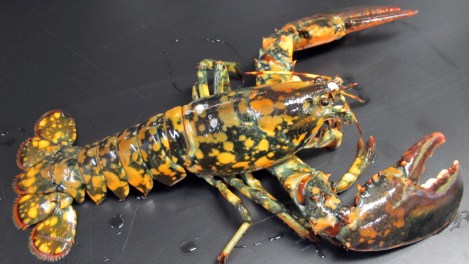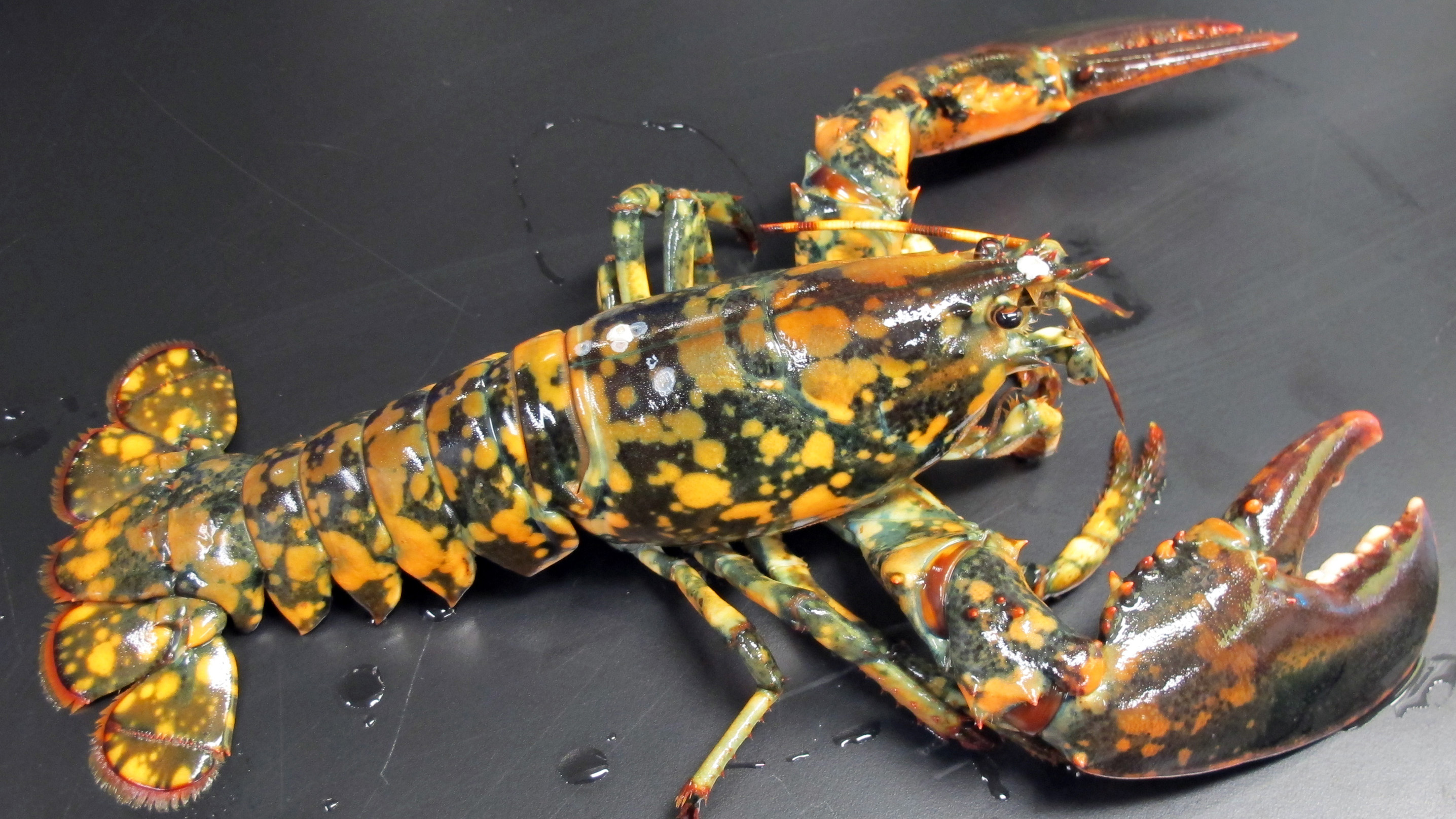
A rare-but-getting-less-rare calico lobster. (Photo courtesy of AP/New England Aquarium, Tony LaCasse.)
Weird things are happening to lobsters.
In June, we brought you the story of a blue lobster, Old Blue (a name I gave him just now), found by a fisherman in Nova Scotia who’d never before seen a blue lobster in his many years of lobster-hunting.
The odds he finds another one are getting better every day.
Reports of odd-colored lobsters used to be rare in the lobster fishing grounds of New England and Atlantic Canada. Normal lobsters are a mottled greenish-brown.
But in recent years, accounts of bright blue, orange, yellow, calico, white and even split lobsters — one color on one side, another on the other — have jumped. It’s now common to hear several stories a month of a lobsterman bringing one of the quirky crustaceans to shore.
It’s not clear why there are more reports of colored lobster. It could be that more people have cameras to back up their tall tales. But it’s also possible that overfishing is to blame.
The off-colored lobsters are more susceptible to predators because they stick out more on the ocean bottom, rather than blending in like normal ones, said Diane Cowan, executive director of The Lobster Conservancy in Friendship, Maine.
“But with the predator population down, notably cod, there might be greater survival rates among these color morphs that are visually easier to pick out,” she said.
Lobster used to be so abundant that eating it was a mark of poverty; its meat was used to feed servants and as fertilizer. Even now, lobster catches in Maine are so big that it sells at lower prices than deli meat in the state.
Lobster-gatherers in Connecticut aren’t so lucky. Their stocks have been dramatically depleted since the late ’90s, dropping from 3.7 million pounds in 1998 to 142,000 in 2011 — the lowest haul ever.
As the number of lobsters hauled into this and other port towns from the Long Island Sound has dwindled, the fishing industry has largely blamed a single culprit: mosquito pesticides.
The industry’s claims hadn’t been supported until a state study this month found traces of pesticides in Long Island Sound lobsters for the first time. The report isn’t definitive, and its authors at the Connecticut Department of Energy and Environmental Protection said more studies are needed. …
Besides mosquito spraying, other culprits could include an increase in predators like striped bass and black sea bass, Mr. Simpson said. The Long Island Sound’s temperature been rising, frequently exceeding the 68 degree threshold that is healthy for lobsters. Bacterial or parasitic infection is another possibility.
Lobster is a unique- and valuable-enough animal that shifts in abundance from overfishing, pollution, and changing water temperatures are tracked and identifiable. The remaining questions, then, are the extent to which those factors influence supply — and, of course, how the economics of lobster evolve in the future.




